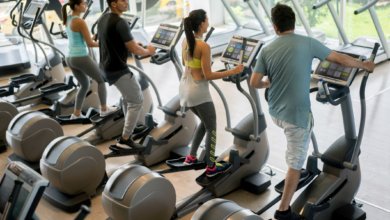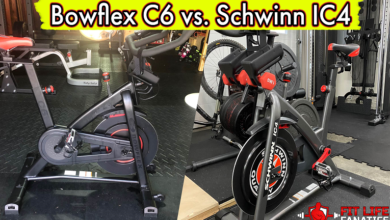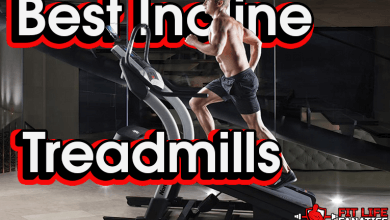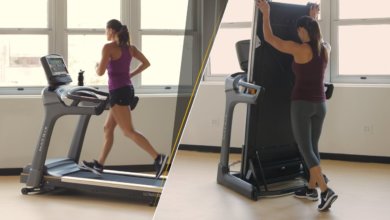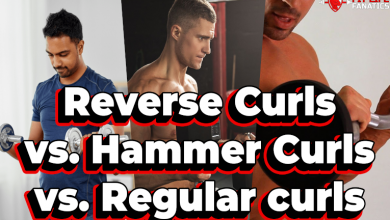Dumbbell Pullover: How To, Muscles Worked, Variations, And Alternative Exercise
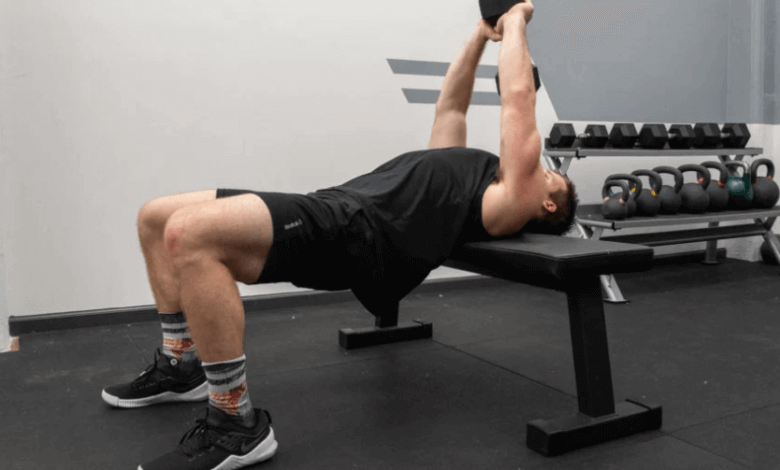
In this article, we’re going to discuss an advanced exercise, the dumbbell pullover exercise.
This is an exercise that will help you improve your chest strength. This exercise is loved by almost everybody from bodybuilders to athletes to trainers; the reason is, it is very effective in building your chest muscles and bringing them up to their full potential.
We are going to discuss everything you need to know about the dumbbell pullover exercise in this article.
- What it is
- How to do it, Correctly, Step by Step
- Muscles worked
- Tips For Beginners
- Common Mistakes
- Who this Exercise is Best for
- Benefits of this great exercise
- Different dumbbell pullover Variations
- Alternative Exercises
What Is The Dumbbell Pullover Exercise
The dumbbell pullover exercise is an advanced exercise that is used primarily to strengthen chest and back muscles. Besides, depending on your grip and with the proper form, it also works some parts of your upper arms – like the biceps and triceps.
It has a lot of variations but generally, it is performed by lying down on a bench… an adjustable bench works great here… and then reaching backward while holding the dumbbell with both of your hands and then raising the weight up and then towards your chest.
*Note: This exercise is an advanced exercise and should not be performed by beginners, doing this exercise improperly will not only come short of building your upper body, but it might also lead to physical injuries. So consult with your personal trainer or exercise professionals before attempting to do this exercise.
How To Perform The Dumbbell Pullover Exercise Step-By-Step
Now we are going to discuss how to perform this exercise
Step 1
Lie down on a bench with your shoulders just like when you lay down on your bed but with your head towards the end.
Step 2
Hold one dumbbell with both of your hands and stretch your arms straight out from your chest as far as you can (as if you’re performing the dumbbell floor press) with a slight bend.
Related Reading: Best Place to Buy Cheap Dumbbells
Step 3
Slowly lower and move the dumbbell backward until you reach a level behind your head, take care to always keep your arms stretched and your elbows locked.
*Note: As I said in step #2, I like to keep my arms slightly bent – you may call it the bent arm dumbbell pullover if you will
Step 4
Move your arms back up again to your original position above your chest, and repeat this pattern for the desired number of reps.
Like this illustration
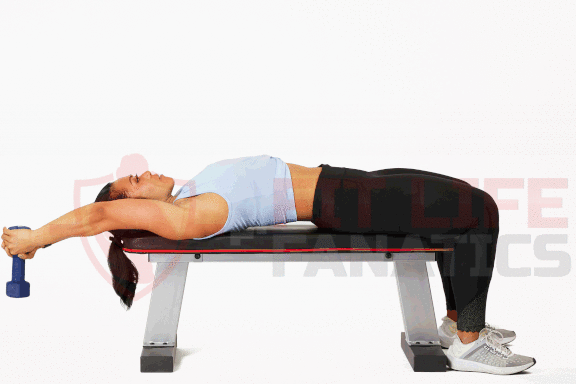
Ideally, you would want to do this exercise in the form of 2 to 4 sets each with 12 to 15 reps (repetitions) this means you should repeat the pattern we mentioned 12 to 15 times, this is a full set. If you are doing single set training, you can leave it at that.
If you’re going for several sets, then take a break for 45 seconds to 90 seconds, then perform another set, and so on totaling 2 to 4 sets.
As you can see this is not an easy exercise to perform and in order to do it correctly, at first you might need a trainer to supervise you.
We’re going to discuss common mistakes performed by beginners that impact the results you get from the dumbbell pullover exercise later in this article, but for now, we are going to discuss the muscles worked in this exercise.
Muscles Worked By The Dumbbell Pullover Exercise
As we previously mentioned, this exercise works your chest, and back. And doing it correctly will significantly impact those muscle areas in your body and not only make them look better, but also make them stronger giving you a more able upper body.
1.Chest
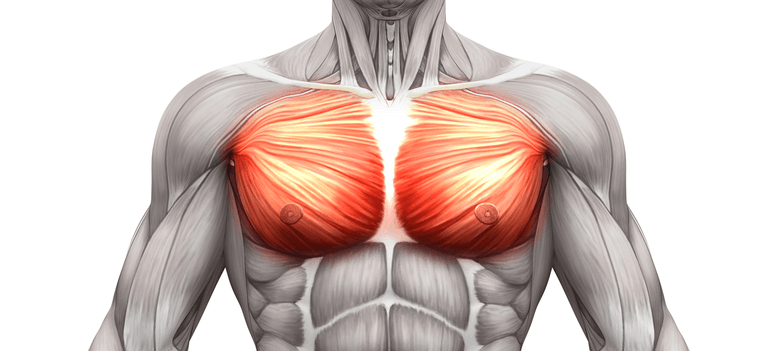
This exercise stimulates and works your entire chest but targets the outer chest more so than the inner chest region.
When these muscles are worked properly and in shape, not only do they help your body become more physically capable when moving, lifting, and interacting but they scream attractiveness…
I mean, come on, who wouldn’t want a really good-looking chest like the one below, am I right?

Other exercises that target your chest area include Australian pull-ups, hammer strength chest press, chest press, and bench press.
2. Back & Lats
Without getting into a lot of details, the dumbbell pullover exercise helps you with the latissimus dorsi muscle, AKA your lats, as well as the serratus muscle.
When these muscles are properly worked out they help you tremendously with your upper body in terms of movement and overall athleticism.
And again a nice looking back is always a plus.
If you want to focus more on the lats you can get a power rack with a lat pulldown attachment, this will allow you to isolate and hit both the upper and lower lats when working out.
3. Arms
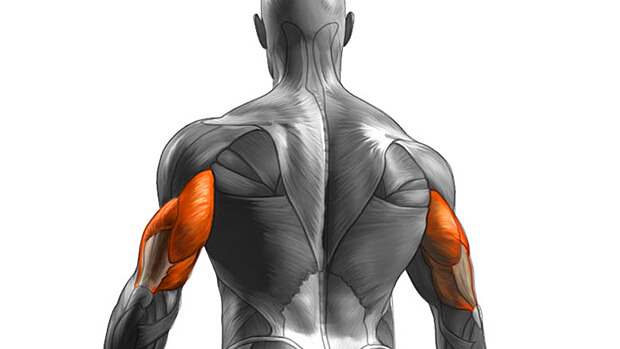
Figuring out what to work out after chest day can prove a bit tricky. Some combine chest and leg workout, but working such closely-related muscles as the chest, arms, and shoulders on the same day can be quite risky – you could end up with overuse injuries.
What about the day after? Well, you have several options here. I often love working shoulders after chest day, but this isn’t a set-on-stone rule, you can as well go for the arms instead… up to you.
One of the key areas that are impacted by this exercise is your arms, specifically your triceps, but it also activates other arm muscles, too. Got skinny arms? Are your hands weak? This exercise makes for a perfect start to put on some crucial hand muscles and build hand strength while at it.
Working arms after chest day offers several perks, including avoiding overuse injuries and ensuring a well-built upper body in general.
Tips And Advice To Get The Most Out Of Dumbbell Pullovers
Now we are going to give you a few tips to benefit the most of this exercise, and we’re going to mention some common mistakes that beginners do, that you should avoid.
Tip No.1
Make sure that you are able to do the exercise properly in the first place. If you don’t have the physical ability, let’s say you have limited mobility or lack the necessary muscular movement and motion that allows you to carry out this exercise in good form throughout the full range of motion, then before attempting to perform it you should attempt a go with lighter weight or no weight at all.
Tip No.2
Do not overuse this exercise, while exercising regularly is a good thing, too much exercise could lead to injuries, and thats something you definitely don’t want.
Tip No.3
When you are just starting out it’s better to perform 7 to 10 reps in each set and then move up from there increasing the number of reps you do in each set as you become more comfortable with the motion and improve upon your strength.
Now we go to some mistakes that you should definitely avoid
Mistake No.1 – Starting in the wrong position
It is extremely important that you start this exercise in the correct form, this will ensure that when you perform the exercise you work the needed muscles correctly.
If you don’t, however, you will end up either wasting your time and not working the muscles properly or you might end up with an injury. So be careful and make sure your starting position is as we mentioned.
Mistake No.2 – Not Engaging Your Core
You should engage your core, this is done to help you, firstly, by preventing an injury, and secondly, by getting the best out of this exercise, this is because keeping a stable core will help you when moving the targeted muscles by applying the necessary pressure on these muscles and keeping your body stabilized throughout the exercise motion.
Related Reading; How To Build Core Strength From Nothing; My Experience
Mistake No.3 – Bending Your Elbows
Not keeping your arms out straight is a common mistake that beginners do when performing this exercise is. It is easy to forget to keep your arms straight and their elbows locked because it is a natural inclination. But keeping them straight is important as it is to keep the pressure applied at all times.
Who Is This Exercise For
This exercise is an advanced exercise, as we mentioned more than once at this point, it is suitable for people who want substantial muscle growth, and a strong upper body, and who are generally experienced when it comes to performing physical exercises.
1. Bodybuilders
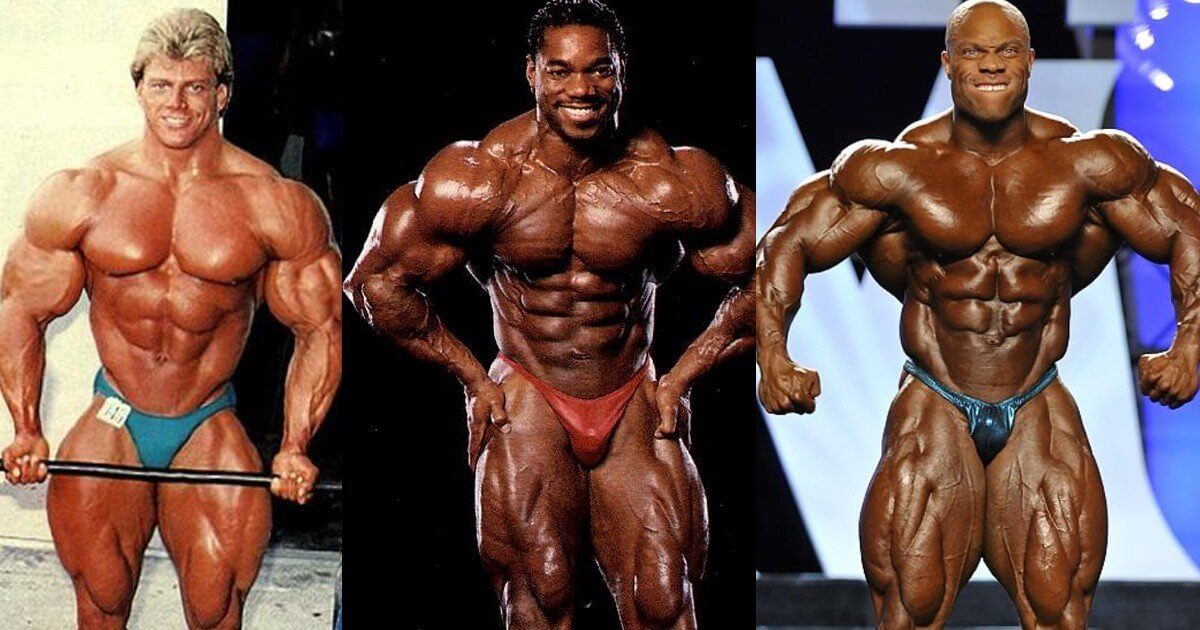
This exercise generally works for athletes who demand a certain type of pressure to be put on their upper body, mainly strength and power athletes and specifically bodybuilders. It targets the upper body and specifically the chest, back, and arm.
2. Sport Athletes

Of course, training exercises for sports athletes vary depending on the type of sport, but generally, all sporting activities require a strong, well-developed chest and back area; this is to improve their overall athletic ability and help them to improve upon their strength.
Benefits Of The Dumbbell Pullover Exercise
An exercise like this, while being advanced to perform, will yield great benefits for your upper body and you know what they say, no pain no gain.
1. You will build a bigger chest and back
Not only will this exercise help you improve the strength of your chest and back but in doing so you will contribute to the growth of these muscles.
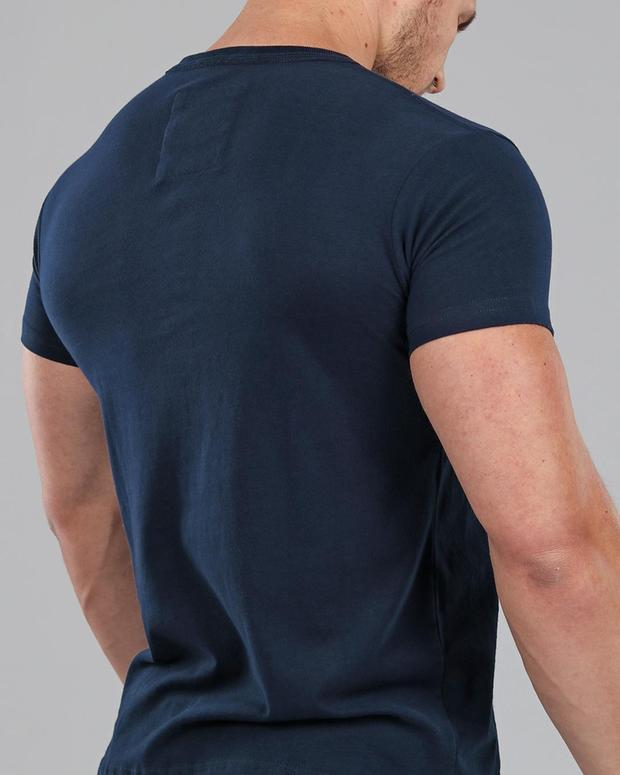
2. It helps to stabilize your upper back
The dumbbell pullover exercise helps your upper back gain more stability simply by putting pressure on the areas that we previously mentioned since performing this exercise correctly forces your upper back to stabilize the arms and shoulder joint and muscle areas.
3. It will improve your shoulder mobility
As we discussed before the dumbbell pullover makes for a great lighter weight strength training exercise that helps several muscle groups in arm and shoulder area and specifically your triceps. This will improve your overall upper body ability and specifically your shoulder mobility giving you a more flexible upper body.
Variations Of The Dumbbell Pullover Exercise
With a few modifications, you can perform different variations of the dumbbell pullover exercise that will help you target different muscle areas.
We are going to be mentioning three of these variations.
1. Single Arm Dumbbell Pullover
This exercise is very similar to the regular dumbbell pullover exercise, the difference being: instead of using both of your arms to lift the dumbbell use one arm so you should just repeat the steps that we mentioned above but just with one arm.
One arm dumbbell pull overs allow you to focus more on the exercise movement and is better suited for beginners and for those that have never performed this exercise before so you can get a better grasp on the movement first.
You can, of course, alternate between your arms in order to get the best out of this exercise, so you work one arm for let’s say 10 reps and then you rest for a couple of seconds and then work the other arm.
Single Arm Dumbbell Pull Overs Video Demonstration
You should ideally perform this exercise with the same number of sets and reps as the regular dumbbell pullover exercise.
2. Dumbbell Pullover Using A Stability Ball
This one is pretty straightforward, we pretty much replace the bench with the stability ball and do the exercise following the same steps of the regular dumbbell pool over. Like this
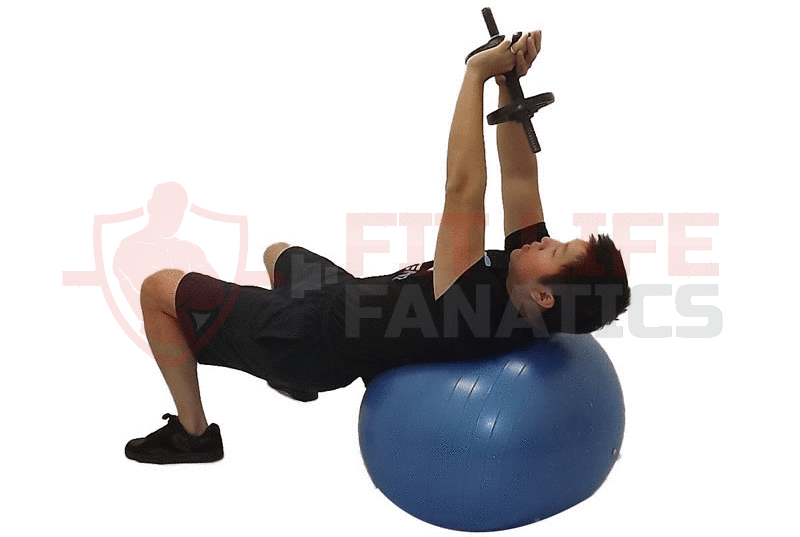
The use of the stability–exercise– ball helps you with a few things; it helps your spine, increases your balance and stability while exercising, and helps you in developing overall control over your core and upper body.
This variation should be repeated, just like the previous one, we discussed, the same number of times as the regular dumbbell pullover exercise.
3. Deadbug Dumbbell Pullover
The third variation we have is the deadbug dumbbell pullover, the steps necessary to complete this variation are a bit more complex than the regular dumbbell pullover.
Here are the required steps to perform this variation successfully
Step 1
Lie down on the ground facing upwards.
Step 2
Hold the dumbbell with your right hand and stretch both your arms from your chest upwards and lift your legs in the air then bend your knees at a 90-degree angle.
Step 3
Move your left hand backward and your right leg forward simultaneously.
Step 4
Go back to your original position and then stretch your arm and leg again, this is the pattern that you should follow.
Step 5
Repeat the pattern for the desired number of reps and then change the dumbbell to the left hand and repeat the pattern with the other leg.
Dead Bug Dumbbell Pullover Video Demonstration
And again just as in the two variations above you should perform this same number of times as the regular dumbbell pullover exercise
Related Reading; The Best Cheap Dumbbells For Your Home Gym in 2022
Dumbbell Pullover Alternatives
Alternative exercises are always a good way of diversifying your workout routine. You have many advantages, one is they help you work out the same areas that regular exercise does but with less pressure and less complexity.
In our case, they help you develop the necessary muscle mass and flexibility to perform regular exercise.
Because as we mentioned time and time again the dumbbell pullover exercise is an advanced exercise, that means in order to perform it correctly you need a certain level of upper body strength and flexibility.
1. Straight-Arm Cable Pulldown
The straight-arm cable pulldown is an exercise that is relatively easy to perform. You stand facing the cable machine at the gym and grab the cable; lifting the weights, and working the chest, back, and arm(triceps) muscle areas.
This exercise helps work these areas making them stronger and hence will help you greatly later when you want to perform the regular dumbbell pullover exercise and its variations.
The steps we mentioned above were very simplified so; here are the detailed steps to perform this alternative exercise.
Step 1
Attach a rope handle to the machine and adjust the weights to your desired weight.
Step 2
While standing, push back your rear and push your shoulders forward. At this position, you should be leaning forward at a 30 to a 45-degree angle.
Step 3
Slowly drag the handle of the cable, lifting the weights in the process, until you reach the level of your hips.
Make sure to keep your shoulders straight and your chest out.
Step 4
Repeat the pattern we mentioned above for the desired number of reps.
This video shows you have this exercise correctly
Straight-Arm Cable Pulldown Video Demonstration
As you can see, the straight-arm cable pulldown is relatively easy to perform compared to the dumbbell pullover exercise, you should perform this exercise in the form of 3 to 4 sets each with 10 to 15 reps.
Related Reading; Lat Pulldown Machines of 2022
2. Dumbbell Chest Fly
In this exercise, you lie down with your full body on the bench, and instead of using one dumbbell you use two dumbbells in both of your hands and move your arms in an opening and closing manner, and in doing so you stretch and contract your chest muscle.
This exercise primarily targets your chest and helps to build those striations. Here are the steps to perform this exercise
Step 1
Lie down flat on the bench and hold the dumbbells with both your hands stretching your arms out straight from your chest.
Step 2
Move both of your arms in a stretching motion as far as you can outwards away from your chest.
Step 3
Then go back to your initial position lifting the weights up in a contracting motion.
*Note: I like to squeeze my chest as contract the dumbbells back towards each other.
Step 4
Repeat this exercise for the desired number of reps.
Pretty simple, right? This video shows you how to perform this exercise
Dumbbell Chest Fly Video Demonstration
You should perform this exercise in the form of 2 to 3 sets each with 10 to 15 reps.
Related Readings;
- Cable Crunches Guide
- Rear Delt Fly Exercise
- Oblique Crunches
- Rear Delt Row Exercise
- Under Hand Row
- Best Place to Buy Dumbbells & Weight Sets
Resources:
- http://www.schwarzenegger.com/fitness/post/Dont-Forget-the-Dumbbell-Pullover
- https://www.sportsrec.com/381451-what-are-dumbbell-pullovers.html
- https://physicalculturestudy.com/2018/05/02/the-history-of-the-dumbbell-pullover/
Ben Mayz
Hi there! I'm Ben, main author and chief editor at Fitlifefanatics.com. I have been obsessed with Strength Training and Fitness for 18 years now.
My passion for living a happy fit lifestyle is what made me realize that fitness is what I wanted for my future.
I went on to earn my Masters in Sports Training & Biomechanics.
My passion for Strength training & fitness and my love of helping others is what made me start Fitlifefanatics.
Here, myself, and a team of specialist aim to provide the most accurate, and actionable information possible in hopes to help foster the fitness community forward.
You can learn more about Fitlifefanatics on our About Page
